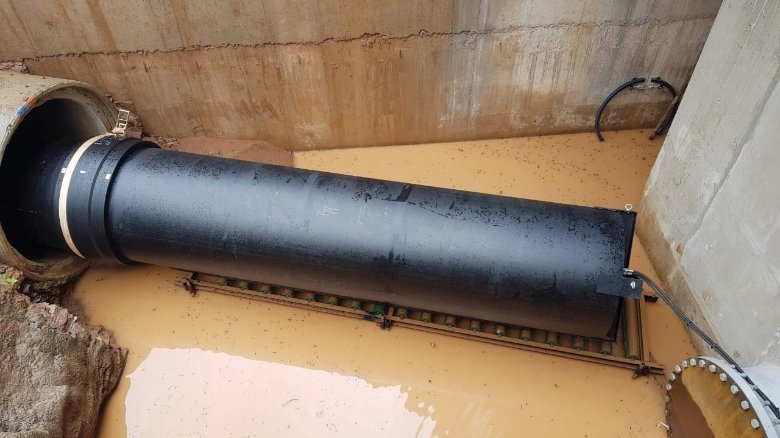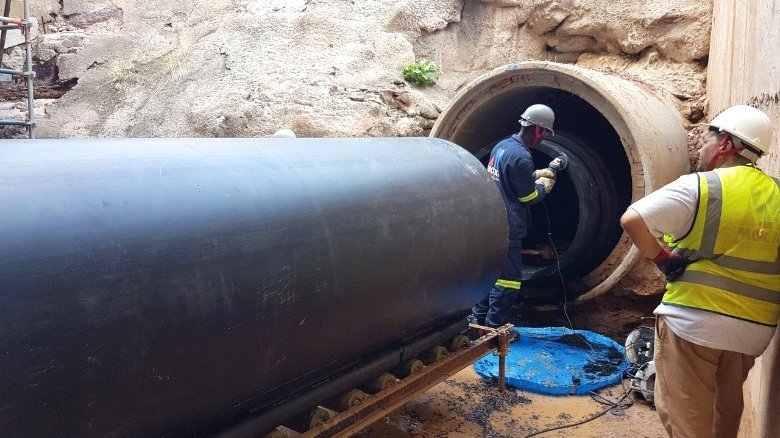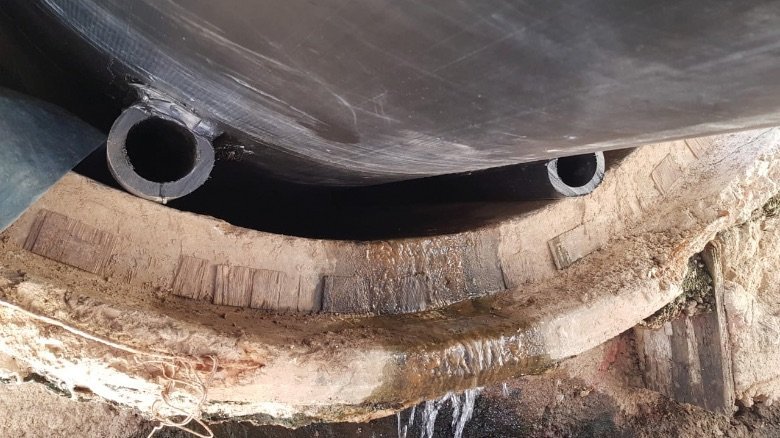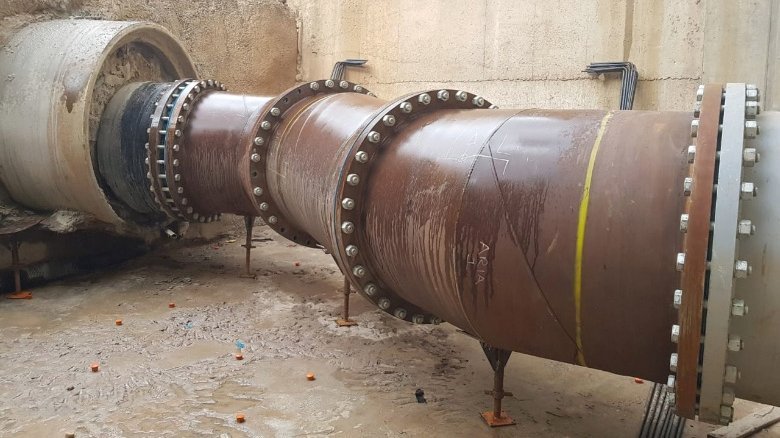The challenge was to rehabilitate the existing concrete pipe, OD 1700 mm and 150 m long that runs underground using a HDPE pipe (high density polyethylene pipe). Because a pump station was built on the construction site at the same time, the space in the excavation pit was conceivably tight. Our partner Astore Keymak (AK) commissioned the AGRU technical engineering to find a workable solution within the scope of the required work.
Our application engineers were able to propose a special solution thanks to their extensive knowledge and experience. The cramped space in the only 5 m long pipe pit prevented the installation of a butt welding machine. Thus the length of the pipe rods was limited to 5 m, because otherwise they could not be inserted into the pipe. In addition, the rough concrete pipe made the pipe installation difficult
Our technicians planned and implemented an extraordinary solution: to ensure easy handling in the short construction pit, between 4 and 5 m long pipe segments with OD 1200 mm were selected. These were equipped with “runners” in Bad Hall and delivered together with our AGRU e-couplers as a ready-to-use system solution to South Africa. Thanks to the “runners”, the HDPE pipes could slide like a sled into the concrete pipe without being damaged. The “runners” were polyethylene pipes with a small OD of only 63 mm. Each pipe was welded with two “runners” by extrusion welding technique. At the two ends of the pipe segments, our engineers left enough space free to attach e-couplers to the OD 1200 mm pipe. Because of the cramped space in the ditch, this was the only acceptable welding solution.
With a winch and pulley, the new pipe was then inserted step by step into the old pipe. It was not pulled in, in order to avoid a tensile load on the welds. The existing annulus was finally dammed with concrete. AGRU on-site application engineers ensured that the construction team could work without any problems. Thanks to this brilliant solution, the installation was made easier despite the tight space conditions and a permanently leak-free system could be installed. Due to the unique mechanical and chemical properties of HDPE 100-RC in terms of service life, pumped medium and water hammer, a long life expectancy can be achieved.




